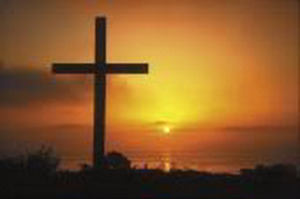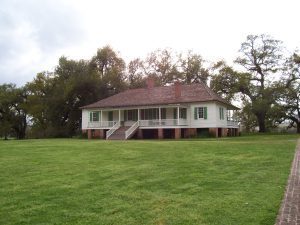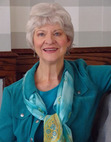Heidi M. Thomas's Blog, page 19
April 7, 2012
He Is Risen!
April 1, 2012
Author Spotlight: Meet Judith Marshall
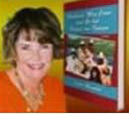 Judith Marshall and I have exchanged blog posts and I'm happy to welcome her today. Here are some insights she shares with us about her writing journey.
Judith Marshall and I have exchanged blog posts and I'm happy to welcome her today. Here are some insights she shares with us about her writing journey.
Where are you from? I'm a third generation native Californian, born in St. Helena and raised in the Bay area, about 30 miles east of San Francisco
Tell us your latest news. I'm thrilled to say that my award-winning novel, Husbands May Come and Go but Friends are Forever, has been optioned for the big screen and is being adapted into a screenplay at present. Here's a brief synopsis:
The story takes place in Northern California, in the spring of 2000, when the dot-com boom was at its peak. Elizabeth Reilly-Hayden is a successful executive in her late fifties and a divorced mother of two. Emotionally armored and living alone, she wants only to maintain the status quo: her long-term significant other, her job, and her trusted friends—five feisty women whose high school friendship has carried them through multiple marriages, dramatic divorces, and maddening menopause. Yet in a matter 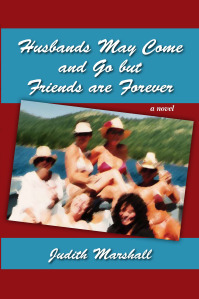 of days, the three anchors that have kept her moored are ripped away. The group of lifelong pals gathers at Lake Tahoe to attend to the funeral arrangements of their beloved friend and tries to unravel the mystery of her death. Through their shared tragedy, Elizabeth learns how disappointment and grief can bloom into healing and hope.
of days, the three anchors that have kept her moored are ripped away. The group of lifelong pals gathers at Lake Tahoe to attend to the funeral arrangements of their beloved friend and tries to unravel the mystery of her death. Through their shared tragedy, Elizabeth learns how disappointment and grief can bloom into healing and hope.
When and why did you begin writing? I didn't start writing until I left my career as a human resources executive in Corporate America in 1997. I never planned on being a writer, but when I read The Divine Secrets of the Ya-Ya Sisterhood I realized that I, too, had a story to tell about a group of women who had been friends since their school days.
Do you have a specific writing style? I write film-ready stories with lots of dialogue
How did you come up with the title? The title was an actual toast made by one of my girlfriends after a rather dramatic divorce. Many agents and editors though it was too long, but I have an emotional attachment to it and wouldn't budge. Since publication, many readers have told me how much they identify with the title. Plus, when someone asks me what the book is about, I simply have to tell them the title.
Is there a message in your novel that you want readers to grasp? One of the messages is that it's okay to ask for help when you need it. We women often try to be strong and weather all our storms ourselves.
What book are you reading now? How We Love Now by Suzanne Levine. It's a non-fiction book about the chances that happen in your second adulthood. Very interesting.
Name one entity that you feel supported you outside of family members. I received tremendous support from my critique group, Women Who Write. We were together for five years and my novel went through two complete revisions with their help. The book couldn't have been published without them.
Who is your favorite author and what is it that really strikes you about their work? I enjoy Richard Russo. I love his self-deprecating humor and his real-life flawed characters.
Did you learn anything from writing your book and what was it? What I've learned is that writing the book is only part of the process. Authors must be willing to market their books as well. Whether you are traditionally published or you do-it-yourself, to be successful you must be willing to spend as much time promoting your book as you did writing it.
For more information about Judith, go to www.judithmarshall.net
Thank you, Judith. This book should be on all our summer reading lists!








March 28, 2012
Western Music, Books, Poetry and Cancer
 This past weekend I participated in the Silver Spur Western Gathering in Spokane, WA. This was a fundraiser for "Because There is Hope," a nonprofit organization providing support and lodging for out of town cancer patients. It was founded by Melody Biehl, a breast cancer survivor, and funds go toward purchasing a permanent location, which will be called "Faye's House," for a friend who lost her battle with cancer.
This past weekend I participated in the Silver Spur Western Gathering in Spokane, WA. This was a fundraiser for "Because There is Hope," a nonprofit organization providing support and lodging for out of town cancer patients. It was founded by Melody Biehl, a breast cancer survivor, and funds go toward purchasing a permanent location, which will be called "Faye's House," for a friend who lost her battle with cancer.
The gathering was organized by Melody and Spokane author Dawn Nelson and featured numerous vendors with beautiful jewelry, saddle-makers, western clothing. On stage throughout the day were performances by cowboy poets Dave McClure, Susie 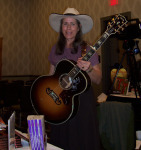 Knight, Michael Whitaker and Alan Halvorson of Rockin HW, and Western singers: Almeda Bradshaw from Montana, Susie Knight, Nevada Slim and Cimarron Sue, Cale Moon and Mary Kaye Naphus. In addition, we enjoyed a concert on Friday and Saturday nights.
Knight, Michael Whitaker and Alan Halvorson of Rockin HW, and Western singers: Almeda Bradshaw from Montana, Susie Knight, Nevada Slim and Cimarron Sue, Cale Moon and Mary Kaye Naphus. In addition, we enjoyed a concert on Friday and Saturday nights.
I have a new favorite Western singer/songwriter to join Juni Fisher and Joni Harms  on my Top Ten list: Mary Kaye, Academy of Western Artist's 2011 Western Female Performer of the Year. She has a beautiful, clear-toned voice that I could listen to all day.
on my Top Ten list: Mary Kaye, Academy of Western Artist's 2011 Western Female Performer of the Year. She has a beautiful, clear-toned voice that I could listen to all day.
Another up-and-coming young artist I was privileged to hear was 17-year-old country/gospel singer/songwriter Cale Moon. He has a rich, deep voice reminiscent of Scotty McCreery, 2011 American Idol Winner and has written more than 100 songs.
I joined a wonderful group of authors, all hawking our wares, and sharing our stories as Spokane's educational TV channel taped our readings. I will post the link when the show airs.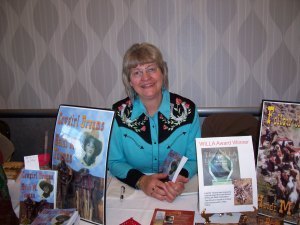
Although it was not a successful book sales event, I enjoyed meeting many good people, hearing some great music and fun cowboy poetry, and visiting with my sister-in-law. It was a fun weekend.








March 22, 2012
Author Interview: Meet Jamie Lisa Forbes
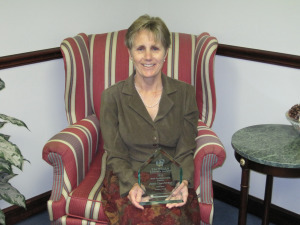 My guest this week is Jamie Lisa Forbes, author of the WILLA Literary Award-winning novel, Unbroken. Congratulations on your award, Jamie. It was great meeting you at the Women Writing the West Conference, and I loved reading your book. I identified with many similar experiences from growing up on a ranch.
My guest this week is Jamie Lisa Forbes, author of the WILLA Literary Award-winning novel, Unbroken. Congratulations on your award, Jamie. It was great meeting you at the Women Writing the West Conference, and I loved reading your book. I identified with many similar experiences from growing up on a ranch.
I enjoyed meeting you as well, Heidi, and thank you for this opportunity to share with your readers.
Synopsis: Ranching is a life of extremes, perhaps even more so on the high plains near Laramie, Wyoming. And no one knows that better than Gwen Swan, who married both her husband Will and his family ranch where she works hard beside the men and struggles to raise her two children. There is little time for reflection on anyone's part as the wheel of the seasons grinds relentlessly onward bringing disasters and triumphs and a rough road for all concerned. Relationships shift, old resentments resurface and friendships are strained and tested as everyone finds themselves struggling against the elements and each other to continue their way of life. In this remarkable debut novel the author presents us with fully formed characters that ring as clear and true as the picture of ranch life she paints as a background for the universal struggles we all confront.
Jamie, this is your first published novel. Have you always wanted to write?
I had a ranch childhood very much like the children I describe in my novel. I grew up as those children did, learning to put up hay, ride and brand, but I also spent a great deal of time reading and from reading, I went into writing my own stories and poems. I wrote almost from the time I could read. And I have written continuously ever since.
I was struck by the fact that winters seem to dominate the story, and I realized from my eastern Montana ranching background how true this is. Winters can last for six months some years, and summers seem so fleeting in comparison. Tell us where the inspiration for this book came from.
I got the idea for this novel in 1990, while I was still working on the ranch. By that time, I had ranched as an adult for over ten years. I had become more and more troubled by the fact that literature about the West was dominated by cowboy myths, when all around me, there were women whose lives of quiet courage went unrecognized. Ten years later, long after I had left ranching, the idea of this novel just would not let me go and I sat down to write the story that had been in my head for years.
For ranch wives like Gwen, hard work beside the men along with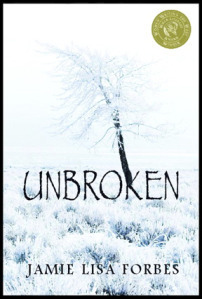 juggling meals and family in relative isolation, is a fact of life. Do you think ranch women are tougher than average?
juggling meals and family in relative isolation, is a fact of life. Do you think ranch women are tougher than average?
That is a great question and now that I live in the southeast, I often think about this, especially now that I am writing a novel that takes place in North Carolina.
I think that what makes successful ranching women unique is their self-sufficiency and independence. They can make do with less and not feel troubled by it. Ranching women, in my experience, are also very stoic. They meet the twists and turns of their lives more with a sense of dark humor than complaint or self-pity.
Having said that, I have met remarkable, ambitious and successful women outside of ranching who are certainly tough in the worlds they inhabit.
Is there a message in your novel you want readers to grasp?
In the face of the unknowns of life, every one of our relationships is important and should be treated with respect and care.
Are you working on another project?
Yes, I am working on a novel that takes place in rural North Carolina about a relationship between a teenage boy and an abused little girl who is rescued by his family.
What books or authors have influenced you?
Ivan Doig's This House of Sky was a huge influence on me. His memoir, which I read in the early 1980's, convinced me that stories about ranching life could have a broad appeal to readers.
(I love Doig's writing too.)
Herman Melville's Moby Dick was also a huge influence. What I learned from Melville is that once the reader learns the rhythms of the life that is depicted–in his case, the harvesting of whales, and in my case, ranching–then those rhythms can be used as the drumbeat to drive the plot to its climax.
What do you find challenging in writing?
I think writing is very hard. The way I work is I conceive of a plot broadly and then break it down into scenes and then break each scene down to its elements focusing on the characters I want to spotlight. But this process of cobbling together sympathetic characters in a believable and engaging story is to me the most challenging part of writing.
What is the most surprising thing you've discovered through writing?
That you often cannot control your characters. They end up acting like themselves and send the plot in directions you didn't imagine. As an example of this, when I originally started Unbroken, I thought I was writing about Meg. She was going to be my heroine. But Gwen, the character I intended to be a secondary character, hijacked the novel and took it over. I think all my readers are glad she did.
I am going through the same experience with my second novel. My characters are taking it in directions that I did not expect at the outset.
What advice would you give to new writers?
Do not stop reading. Do not stop writing.
Unbroken may be found at Jamie's website and her publisher, Pronghorn Press, Pronghorn Press also sells an audio version of Unbroken and the audio version is very moving. Also check out Jamie's author page on Amazon.
Once again, thank you for this opportunity, Heidi, and good luck in your writing endeavors.








March 20, 2012
New Word Definitions
Have some fun! Can you come up with some of your own?
1. ARBITRATOR: A cook that leaves Arby's to work at McDonalds
2. AVOIDABLE: What a bullfighter tries to do
3. BERNADETTE: The act of torching a mortgage
4. BURGLARIZE: What a crook sees with
5. CONTROL: A short, ugly inmate (I had to think about this one. . . but got it!)
6. COUNTERFEITERS: Workers who put together kitchen cabinets
7. ECLIPSE: What an English barber does for a living
8. EYEDROPPER: A clumsy ophthalmologist
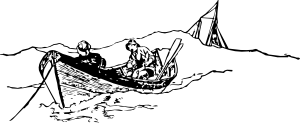 9. HEROES: What a guy in a boat does
9. HEROES: What a guy in a boat does
10. LEFTBANK: What the robber did when his bag was full of money
11. MISTY: How golfers create divots
12. PARADOX: Two physicians!!
13. PARASITES: What you see from the top of the Eiffel Tower
14. PHARMACIST: A helper on the farm
15. POLARIZE: What penguins see with
16. PRIMATE: Removing your spouse from in front of the TV!!
17. RELIEF: What trees do in the spring
18. RUBBERNECK: What you do to relax your wife
19. SELFISH: What the owner of a seafood store does
20. SUDAFED: Brought litigation against a government








March 17, 2012
Bye-Bye Penske
After three days of cool, rainy and windy weather in Louisiana, Mississippi and Alabama, we finally crossed the line into Florida and sunshine! We had been driving through corridors of pines through several states and seeing lush, green pastures and cattle. It's funny, because when you think of Florida you normally think of beaches or swamps, not cattle ranches. I couldn't help but think what my dad and our neighbors would've given for such lush green grass. But on the other hand, eastern Montana does have some of the most nutrient-rich grass in the nation, even though it's green only a few months of the year. In fact, during WWII, the Armed Services requested Montana grain because it was so rich in protein.

St. Pete's Beach
We decided to spend a "down" day in St. Pete's Beach and the weather cooperated nicely, allowing us to spend the afternoon at the beach. It was good not to have to pack up and lug suitcases in and out of a new hotel for at least one night.
The next day: Frostproof and the end of the 3,040-mile journey, unloading the match equipment and saying Good-Bye to Penske Truck! Hooray. We picked up a "normal" Ford Escape and commenced the last few days in vacation mode.
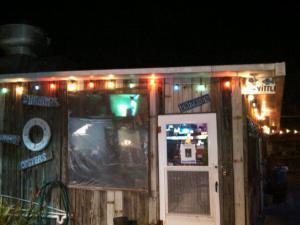
Cherry Pocket
We ended up eating twice at a funky and fun restaurant called the Cherry Pocket Steak and Seafood Shak, in the middle of a fishing camp near Lake Wales, FL. We sat outside, enjoyed the warm evening and a singers with guitars, playing "oldie-goldies." Great food, fun atmosphere. We highly recommend it!
Our last port-o-call, Boca Raton, where Dave's Navy buddy, George and his wife, Francoise, live. We had a great visit, wonderful walks on the beach and outdoor dining at the Patio Bar and Grill, overlooking  Deerfield Beach. Our friends took us to see "Butterfly World"–what a fun and fabulous place that is!
Deerfield Beach. Our friends took us to see "Butterfly World"–what a fun and fabulous place that is!
All too soon, our cross-country journey came to an end.
We left Florida in 80-degree weather, wading in the surf and walking on the sand.

Deerfield Beach in Boca Raton, FL
And we woke up the next morning to this "welcome home" sight!
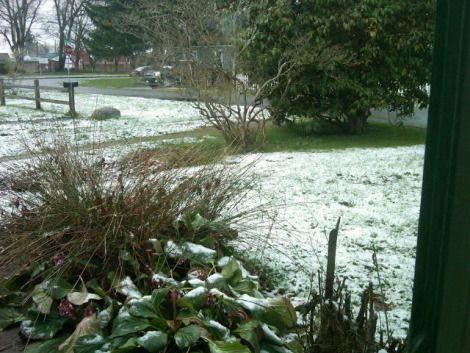
"Welcome Home"








March 14, 2012
Author Interview: Meet Magdalena Ball
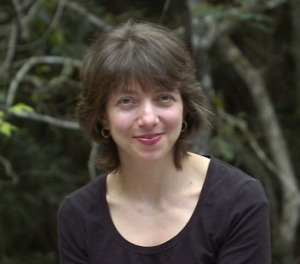 My guest this week is Magdalena Ball, novelist, poet, nonfiction writer, and reviewer. Among the work Magdalena has published is her new novel Black Cow.
My guest this week is Magdalena Ball, novelist, poet, nonfiction writer, and reviewer. Among the work Magdalena has published is her new novel Black Cow.
Black Cow explores the lives of James and Freya Archer, a couple at the 'top of their game', earning massive salaries and enjoying exclusive lifestyles with their two beautiful teenage children, but something is rotten under the shining façade of their lives. A recent survey estimated that close to one quarter of adults worldwide have made a voluntary decision to change their lives in ways that reduce their incomes and spending.
Demographers are predicting up to one million people will downshift during the next three years. Coupled with the worldwide economic downturn, there is clearly an interest in living life in a way that doesn't involve continually trying to earn, and spend more in an effort to "keep up with the Joneses."
Black Cow is a 'tree-change' novel that explores these notions in the context of a single ailing Australian family. Set between New South Wales' ritzy Double Bay, and a small village outside of Hobart, Tasmania, where the couple decide to radically change their lives and become self-sufficient, the novel follows one family on the brink of collapse, struggling to regain balance and creativity in their lives. Black Cow explores serious and topical issues, such as the modern dilemma of ever increasing workloads, 'the rat race', and the impact of stress on families, and overconsumption on the environment, but it also touches on the psychological development, as the family has to dig deep into both the earth and their selves in order to find out what is ailing them.
Author Lisa Heidke calls the "writing excellent, professional and polished … capturing that claustrophobic feeling of being trapped and not knowing where to turn. This is a gripping yarn that will appeal to a wide group of readers."
I asked Magdalena to answer a few questions about her novel.
How did the story come about?
In many ways Black Cow began as a sort of wish fulfillment. My husband and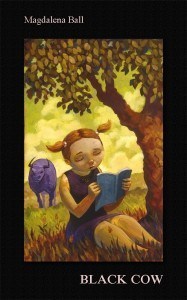 I always had leanings towards self-sufficency — I'd pore through the pages of Earth Garden, Jackie French's guide to Self Sufficiency and a number of other books, and imagine myself growing all my own fruit and vegetables, making my own fuel, raising chickens, and living simply off the land. Of course we both knew that dreams were one thing and the reality of self-sufficiency quite another. But the idea stuck with me as one that had rich novelistic pickings. Also I've watched the impact of the Global Financial Crisis and the way in which governments and businesses have encouraged people to work longer hours, spend and consume more, and that has simply struck me as odd and counter-productive. I wanted to explore that notion more, albeit in fictionalised form. I do have to say as well that I've always been a fan of the BBC show The Good Life, and the idea of picking up a few of those threads was appealing to me.
I always had leanings towards self-sufficency — I'd pore through the pages of Earth Garden, Jackie French's guide to Self Sufficiency and a number of other books, and imagine myself growing all my own fruit and vegetables, making my own fuel, raising chickens, and living simply off the land. Of course we both knew that dreams were one thing and the reality of self-sufficiency quite another. But the idea stuck with me as one that had rich novelistic pickings. Also I've watched the impact of the Global Financial Crisis and the way in which governments and businesses have encouraged people to work longer hours, spend and consume more, and that has simply struck me as odd and counter-productive. I wanted to explore that notion more, albeit in fictionalised form. I do have to say as well that I've always been a fan of the BBC show The Good Life, and the idea of picking up a few of those threads was appealing to me.
In addition to your novels, you've also published a number of poetry books, and even a non-fiction book. Why do you choose to work in different genres?
For me the processes of writing poetry and nonfiction are completely different to the processes of writing a novel. While all of these genres involve analysis and construction, I find that the poetry is more intuitive, symbolic and actually relaxing for me — a way of exploring a notion within the framework of a few stanzas — like a single moment in time. It's something I find myself gravitating to it almost as a kind of need. The gratification is usually reasonably fast.
The nonfiction is almost always about teaching, in a purely naturally flowing way that I find reasonably easy and pleasurable.
Fiction on the other hand is always challenging for me. It involves less inspiration and a whole lot more work. There's world building involved, character development, plotting, stylistics and narrative to map out and keep going over the period of some 90,000 words. It's big, slow, and sustained, and yet at the end of it I feel I've built something bigger than myself – something reasonably grand. So I need all three forms in my life I find – working different areas of the brain and producing different types of output. Of course working in one area feeds the others. The precision and tightness of thought in poetry and the sheer rhythm and beauty can help write better prose sentences. The research involved in nonfiction will also feed into fiction. It's all connected.
Who are some of your favorite/most inspiring authors?
I get asked this question a lot, and being a big reader, I fear I tend to give different answers each time. I've just finished Jane Smiley's biography of Charles Dickens, and so I'd like to answer, today, Jane Smiley and Charles Dickens (though maybe not all of Dickens – some of his work though is still fresh, even today). I'd like to say John Steinbeck, because Black Cow, somewhat grandly, has been likened to The Grapes of Wrath (humbling, to say the least). I almost always say James Joyce, though I have yet to crack Finnegan's Wake, but Ulysses will keep me inspired for the rest of my life, and I've been listening to Frank Delaney's magnificent ReJoyce podcasts lately which have re-invigorated my love for that great book. I might stop there, knowing full well, that I've left out many of my favourite authors, and that there are new ones I've yet to discover as well.
Finally, where can readers get hold of a copy of Black Cow?
Drop by Amazon where the book is available in both the print and Kindle versions.
More information including book club notes (and information on how to score a visit) can be found at Magdalena's website.
Magdalena Ball is the author of the newly released novel Black Cow. Grab a free mini e-book brochure here: http://www.bewritebooks.com/mb/BlackCow/BlackCow.html She also runs The Compulsive Reader and is the author of Repulsion Thrust and Sleep Before Evening.
Thank you for sharing your virtual book tour with us today, Maggie. Best of luck with this new novel!
Her next tour stop will be Tuesday, 20 March: The Dark Phantom








March 13, 2012
Travels with the Penske Pair: Part IV
We had hoped to stop in the Gulfport MS area to take an airboat tour of an alligator ranch, but the weather had turned downright chilly (a reminder of home!) so we decided to forgo this stop.

USS Alabama Battleship, B25 Mitchell Bomber in Foreground
Our next stop was in Mobile AL for a tour of the battleship USS Alabama in Battleship Memorial Park. The Alabama was commissioned in 1942 with Captain George B. Wilson in command and
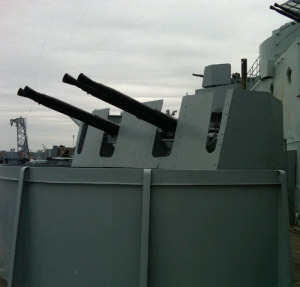
USS Alabama 5-inch/38 cal. Side Gun Turrets
served in World War II in the Atlantic and Pacific theaters. She was decommissioned in 1947, assigned to reserve duty, and was retired in 1962. In 1964, Alabama was taken to Mobile Bay and opened as a museum ship.
The below-decks tour was a fascinating look into history and how the crew of 2,500 men lived, worked, ate and slept. The ship is 680 feet long and 108 feet wide and weighed in at more than 45,000 under battle conditions.
The park included an
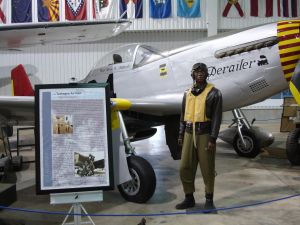
Tuskegee Airmen Display
aircraft pavilion, and one of the displays commemorated the Tuskegee Airmen who were the first African-American military aviators in the United States armed forces and served during World War II.
Another tour took us through the USS Drum (SS-228), a Gato-class diesel-
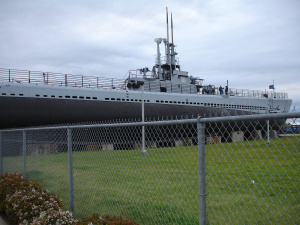
USS Drum Submarine
electric submarine and the oldest American WWII submarine in existence. There were 52 submarines and more than 3,600 submariners who made the ultimate sacrifice in WWII.
The inside of the submarine pointed up the need to be young, slender and limber! It's a good thing I don't have to do this job.
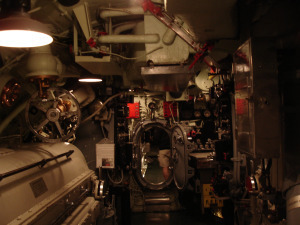
Inside the USS Drum








March 9, 2012
More Magnolia Mount Photos
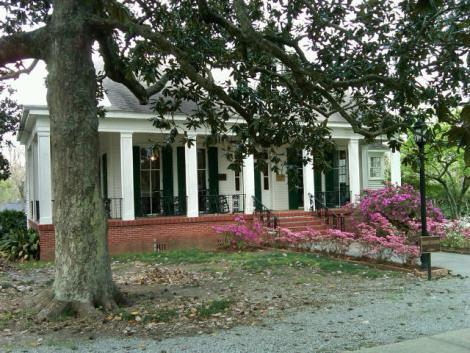
Hart House. The first mayor of Baton Rouge
It wasn't clear whether this house was originally part of the plantation acreage. Robert Hart was the first mayor of Baton Rouge and in 1899 was instrumental in getting bonds passed to improve education, including a new school for black children.

Girls' bedroom in the Magnolia main house
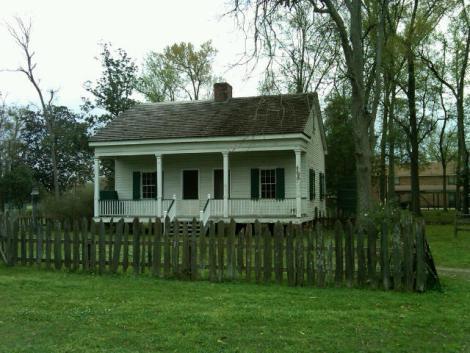
Overseer's House
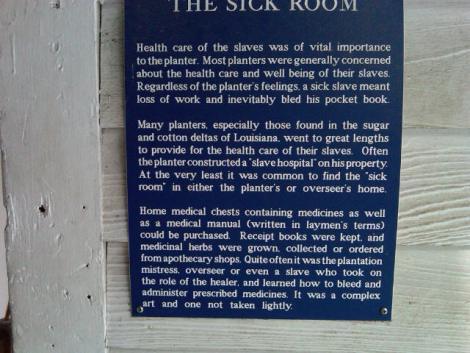
Sick Room Sign on Overseer's House
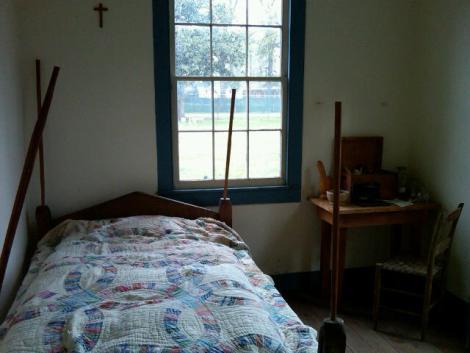
Sick Room for Slaves
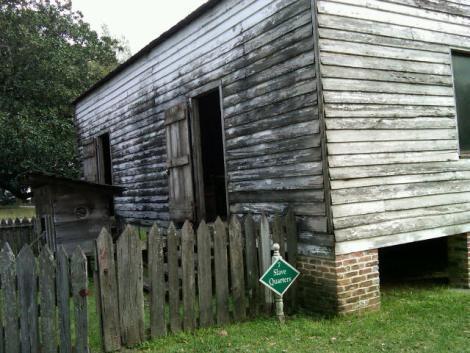
Slaves' Quarters
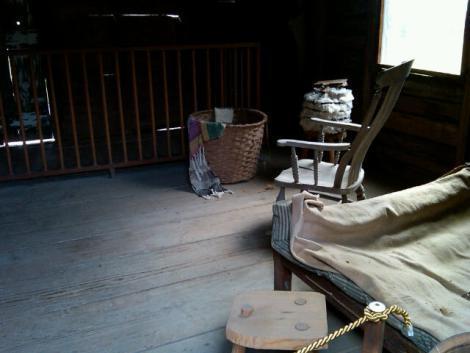
Inside Slaves' Quarters
Quite an interesting and sobering look into part of our country's history.








March 8, 2012
Travel Adventures Part IV
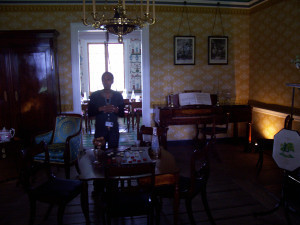
Magnolia Mound House Parlor
Baton Rouge, LA, offers several plantation tours. Because of the size of our ride, I selected BREC's Magnolia Mound, which looked easily accessible. The on-line site I found at first listed it on Sharp street, which we found quite easily…except, Magnolia Mound was nowhere to be seen. A stop at a gas station nearby netted no information—no one had heard of it! On the trusty smart phone, we found the "real" address on Nicholson street, about 10 miles west of where we were. Still have no idea how the address came to be listed wrong, but we finally arrived.
On 16 acres of the original 900, the architecture is called "vernacular," influenced by early settlers from France
and the West Indies. The property includes a 200-year-old historic museum house, an open-hearth 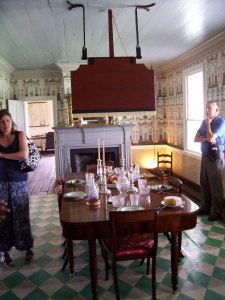 kitchen with a kitchen garden, overseer's house, a slaves' quarter house, crop garden, pigeonnier, and carriage house.
kitchen with a kitchen garden, overseer's house, a slaves' quarter house, crop garden, pigeonnier, and carriage house.
We thoroughly enjoyed the tour and marveled at the cooking processes of the day.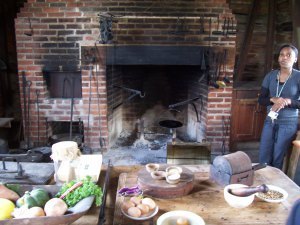 fireplace, with a brick oven built into the wall for baking, and the devices, such as a "toaster," a metal frame to hold two pieces of bread that one could turn for toasting on both sides. With no refrigeration and winters not cold enough to collect ice, food was buried in the ground in large crockery olive oil jars from Europe. The pigeonnier housed squab, a delicacy in early America.
fireplace, with a brick oven built into the wall for baking, and the devices, such as a "toaster," a metal frame to hold two pieces of bread that one could turn for toasting on both sides. With no refrigeration and winters not cold enough to collect ice, food was buried in the ground in large crockery olive oil jars from Europe. The pigeonnier housed squab, a delicacy in early America.
This plantation is kept up by the Baton Rouge's park system, offering educational programs, workshops, lectures, festivals, and other special events to illustrate and interpret the lifestyle of the French Creoles.
That evening we found Boutin's Restaurant, a "Cajun music and dining experience." This certainly was a great experience, from the boudin sausage (casings stuffed with rice and sausage) the crab-stuffed catfish entrée I had (complete with corn maque choux, Cajun rice 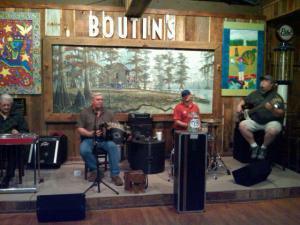 AND a stuffed potato!), to the folk music band. Their music reminded me a lot of the old time groups my dad used to play fiddle with. A great evening—I recommend Boutin's.
AND a stuffed potato!), to the folk music band. Their music reminded me a lot of the old time groups my dad used to play fiddle with. A great evening—I recommend Boutin's.
The next day we had planned to stop at Moss Point near Gulfport to take an alligator ranch boat tour, but the sunny southern weather had turned downright cold, with clouds, rain and wind. Next stop: Mobile, AL!









